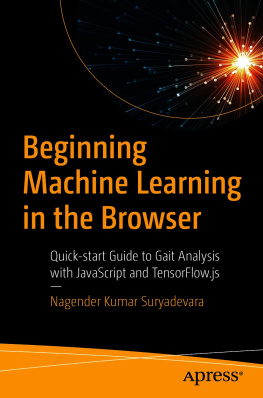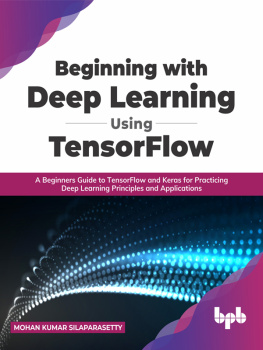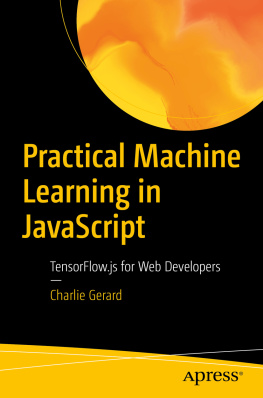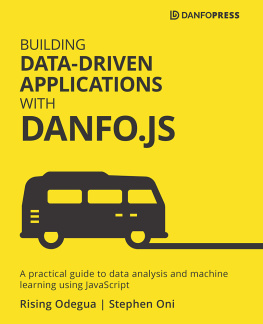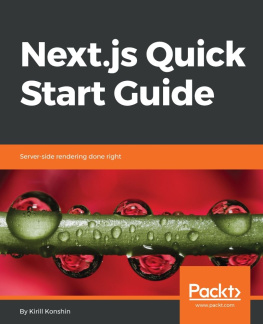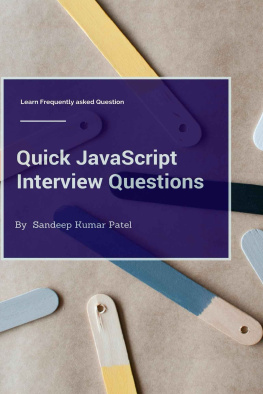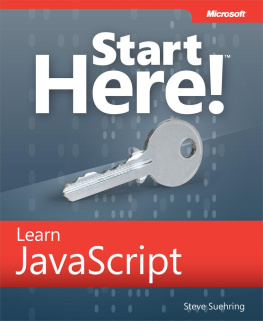Nagender Kumar Suryadevara - Quick-start Guide to Gait Analysis with JavaScript and TensorFlow.js
Here you can read online Nagender Kumar Suryadevara - Quick-start Guide to Gait Analysis with JavaScript and TensorFlow.js full text of the book (entire story) in english for free. Download pdf and epub, get meaning, cover and reviews about this ebook. publisher: Apress, genre: Computer. Description of the work, (preface) as well as reviews are available. Best literature library LitArk.com created for fans of good reading and offers a wide selection of genres:
Romance novel
Science fiction
Adventure
Detective
Science
History
Home and family
Prose
Art
Politics
Computer
Non-fiction
Religion
Business
Children
Humor
Choose a favorite category and find really read worthwhile books. Enjoy immersion in the world of imagination, feel the emotions of the characters or learn something new for yourself, make an fascinating discovery.
- Book:Quick-start Guide to Gait Analysis with JavaScript and TensorFlow.js
- Author:
- Publisher:Apress
- Genre:
- Rating:4 / 5
- Favourites:Add to favourites
- Your mark:
- 80
- 1
- 2
- 3
- 4
- 5
Quick-start Guide to Gait Analysis with JavaScript and TensorFlow.js: summary, description and annotation
We offer to read an annotation, description, summary or preface (depends on what the author of the book "Quick-start Guide to Gait Analysis with JavaScript and TensorFlow.js" wrote himself). If you haven't found the necessary information about the book — write in the comments, we will try to find it.
Quick-start Guide to Gait Analysis with JavaScript and TensorFlow.js — read online for free the complete book (whole text) full work
Below is the text of the book, divided by pages. System saving the place of the last page read, allows you to conveniently read the book "Quick-start Guide to Gait Analysis with JavaScript and TensorFlow.js" online for free, without having to search again every time where you left off. Put a bookmark, and you can go to the page where you finished reading at any time.
Font size:
Interval:
Bookmark:
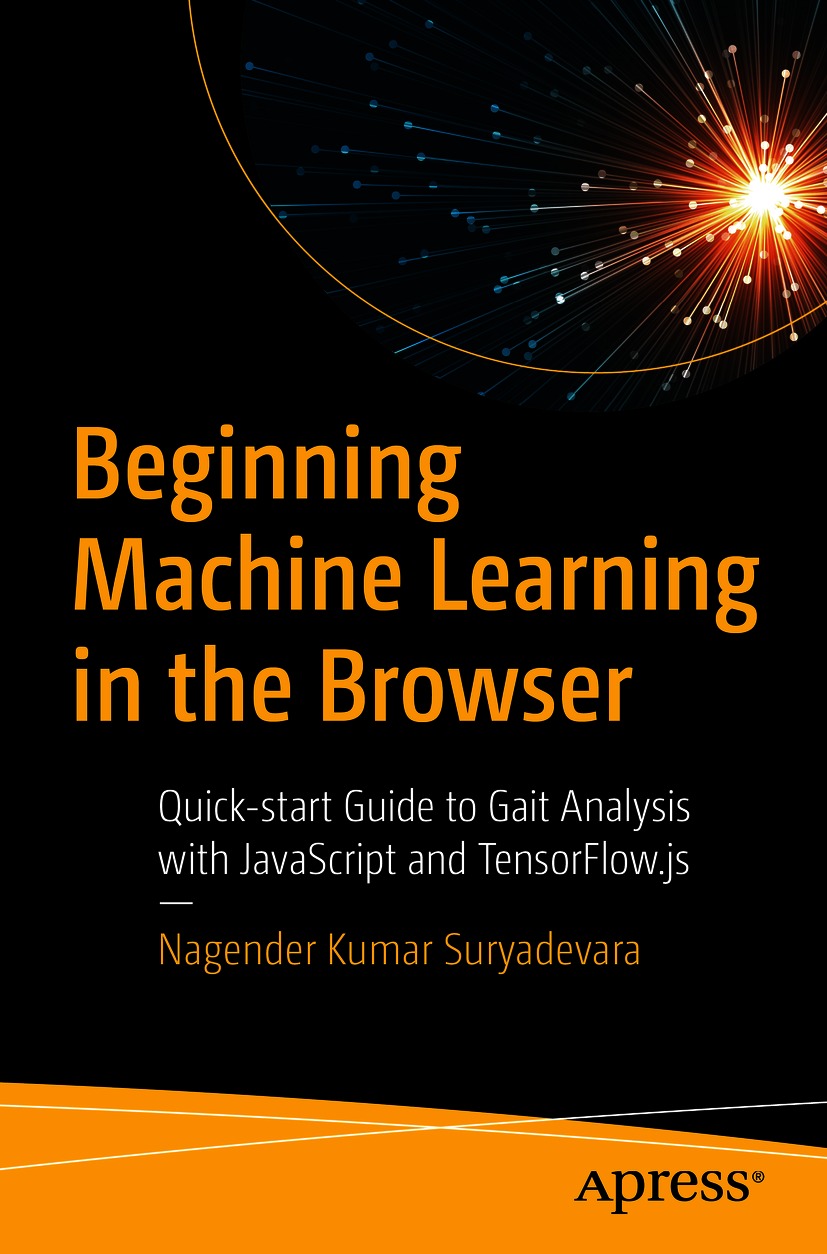

Any source code or other supplementary material referenced by the author in this book is available to readers on GitHub via the books product page, located at www.apress.com/978-1-4842-6842-1 . For more detailed information, please visit http://www.apress.com/source-code .
In recent times, artificial intelligence (AI) and machine learning (ML) techniques have been widely used in many applications , such as monitoring environmental parameters, monitoring, and control of industrial situations, intelligent transportation, structural health monitoring, health care, and so on. The advancement of electronics, embedded control, smart sensing, networking, and communication has made it possible to develop low-cost smart systems. Although there are smart systems, the computing capabilities are minimal, and hence they are considered to be resource-constrained computing devices (e.g., mobile phones, smart watches, and mini electronic gadgets).
Applying smart strategies involving complex mathematical operations of AI and ML methods on resource-constrained computing devices and browsers is challenging. The advancements in Internet technologies, primarily JavaScript skills, have made it possible to execute AI/ML models in the browsers and resource computing devices. There are many other publications on AI, ML, and JavaScript, but this book provides beneficial information and practical knowledge to develop intelligent methods/models from scratch and deploy them on browsers and resource-constrained computing devices.
The complete book is divided into six chapters:
Chapter describes the fundamentals of web development. This chapter provides a short description of designing and developing web applications using web building blocks. For developing an AI/ML model and running on the browser or resource-constrained computing device, this chapters practical knowledge is essential. For a beginner in any field of study and interested in developing web apps, this chapter provides the necessary practical skills to better realize web applications.
Chapter delivers the steps to be performed and the necessary JavaScript libraries to be considered for processing the data at the computers browser application level. The latest JavaScript libraries (p5.js and ml5.js) that help build the AI/ML models with practical steps are covered.
Chapter introduces the human pose estimation application as an example that enables the reader to understand how an AI/ML model involving complex mathematical operations can be used to run in the browser. The stepwise procedure teaches you how to implement ML methods to estimate an individuals poses.
Chapter covers the open-source JavaScript library TensorFlow.js, which will be useful for building and deploying AI/ML models in the browser. The architecture of the TensorFlow.js, including its accelerators that support massive data processing at the browser, is explained. Practical examples of executing a neural network model for useful classification tasks are elucidated using the TensorFlow.js library.
Chapter examines how to determine gait parameters by applying AI/ML methods along with the JavaScript libraries in the web browser application. The chapter walks you through the basics of gait analysis and expands on the observational method considered in determining the vital parameters for analysis using the AI in the browser.
Chapter provides a few more advanced applications to run on the browser by applying the AI/ML methods. This chapter encourages the reader to think about the advancements possible when running AI/ML models in the browser.
I hope that you enjoy reading the book. If you need any help whatsoever with the practicals, please feel free to contact me.
Dr. S. Nagender Kumar Suryadevara
Associate Professor, School of Computer and Information Sciences,
University of Hyderabad, India.
This journey would not have been possible without the support of my family, professors, mentors, and friends. I am especially grateful to my parents, who supported me emotionally. To my family, thank you for encouraging me in all of my pursuits and inspiring me to follow my dreams.
I want to express my sincere gratitude and heartfelt thanks to Vishwesh Ravi Shrimali for allocating some time and taking responsibility for reviewing the book chapters and providing valuable comments and helpful suggestions.
Thanks to everyone in the publication team, especially Aaron Black, who helped me in getting the book content into great shape, James Markham, who took great pains in grooming the book, and Jessica Vakili, who made sure the book writing process went smoothly and on time.
I am indebted to many of my students and colleagues who were involved with various projects over several years, and some of their works have been used in this book. I would especially like to give credit to one of my students, Ashish Gupta, for helping me in executing the programs in Chapter .
Font size:
Interval:
Bookmark:
Similar books «Quick-start Guide to Gait Analysis with JavaScript and TensorFlow.js»
Look at similar books to Quick-start Guide to Gait Analysis with JavaScript and TensorFlow.js. We have selected literature similar in name and meaning in the hope of providing readers with more options to find new, interesting, not yet read works.
Discussion, reviews of the book Quick-start Guide to Gait Analysis with JavaScript and TensorFlow.js and just readers' own opinions. Leave your comments, write what you think about the work, its meaning or the main characters. Specify what exactly you liked and what you didn't like, and why you think so.

